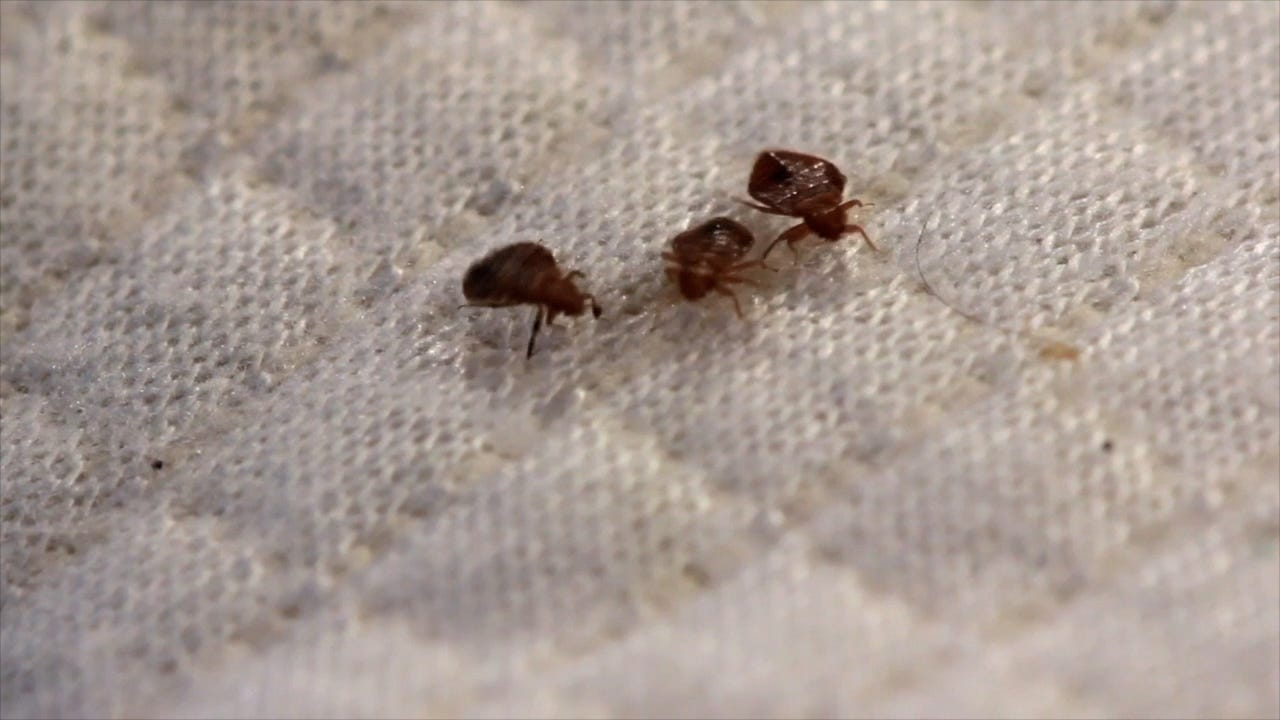Your hotel room is grosser than you think: A #CleanTok expert shares easy fixes

What are the first things you do when you arrive at your new hotel room or Airbnb? Jump on the bed to test its firmness? Unpack your clothes? Check for bedbugs?
You may want to add a quick cleaning to your list.
Rochelle Stewart is one of those travelers who always does. She goes by @operation_niki on “CleanTok,“ the cleaning tips area of TikTok. She has millions of views on her videos showing how she gives her hotel room a quick wipe-down before unpacking.
Even the most luxurious hotels still have incredibly germy surfaces, especially in the bathroom and other high-traffic areas – and yes, even with housekeeping. There’s a difference between cleaning and disinfecting.
A September swab test by WaterFilterGuru.com, a water quality expert company, found surfaces of a home share and hotel bathroom to be many times as germy as a toilet seat, pet bowl and kitchen sink.
These are high-traffic areas that also harbor germs because of the moist surroundings and cross-contamination – think toothbrushes and razors sitting on the bathroom counters. When water gets trapped in faucets, bacteria can fester.
More: Is your hotel’s COVID-19 cleaning protocol up to snuff? How to know if your room is really clean
Where are the germiest spots in a hotel or Airbnb?
The sink faucet clocked in as the germiest place – a home-share faucet has almost 60,000 times as much bacteria as a toilet seat. WaterFilterGuru.com's swab test also found:
At hotels:
- ◾ A hotel shower head had 25,000 times the bacteria of a toilet seat.
- ◾ A toilet seat had seven times more bacteria than a hotel shower handle.
- ◾ A hotel sink faucet had over 55,000 times the bacteria of a toilet seat.
- ◾ A toilet seat had four times more bacteria than a hotel sink handle.
- ◾ A hotel tub had four times more bacteria than a toilet seat.
At home shares:
◾ A home-sharing shower head had nearly 55,000 times the bacteria of a toilet seat.
◾ A home-sharing shower handle had nearly 10 times the bacteria of a toilet seat.
◾ A home-sharing sink faucet had nearly 60,000 times the bacteria of a toilet seat
◾ A home-sharing sink handle had nearly 55,000 times the bacteria of a toilet seat.
◾ A home-sharing tub had over 55,000 times the bacteria of a toilet seat.
“Just like any other frequently used space, these areas can harbor various microorganisms,” Brian Campbell, President & CEO at WaterFilterGuru.com told Paste BN via email. “While the idea of a sink faucet being as contaminated as a toilet seat sounds unsettling, it's essential to remember that not all bacteria are harmful. Nonetheless, practicing good hygiene is key to avoiding potential health issues.”
For the most part, coming into contact with the bacteria is going to be fine, but some, such as E. coli, can make you sick.
“The risk of infection from casual contact is generally low,” Campbell said. “The bacteria on faucet handles are typically different from those inside the faucet and are often harmless. Still, it's always a good idea to practice regular hand hygiene.”
The WaterFilterGuru.com study found home-share surfaces like bathtubs to be generally dirtier than a hotel’s.
Should we clean our hotel room?
Stewart said that while she always did some cleaning to her hotel rooms, her must-do cleaning routine was inspired after learning about black lights revealing how dirty even a four-star hotel room can be.
“Initially, I thought (housekeeping) thoroughly cleaned the room,” she told Paste BN. “Ever since then, I was like, I’ll take matters into my own hands.”
She suggests everyone take about 15 minutes to wipe down high-touch surfaces of their hotel room with disinfectant wipes before settling in, like the light switches or remote control. “It shouldn’t consume you but also be cautious, but you don’t have to go crazy with it.”
Here are some expert tips on how to clean your hotel room without compromising your vacation:
◾ Avoid touching your face. In standard good hygiene practice, don’t touch your eyes, mouth and nose with unwashed hands, Campbell said.
◾ Wash your hands (a lot).
◾ Invest in to-go disinfectant wipes and a travel-size sanitizing spray. No one wants to lug around a bottle of Lysol in their suitcase, but Stewart always packs these two items when she travels. She loves Microban sprays because “it keeps disinfecting.”
◾ Ask for fresh sheets. If you don’t want to be “extra” as Stewart puts it, and pack disposable sheets, give the front desk a call when you arrive for some fresh sheets. (Don’t forget to tip housekeeping!)
◾ Don’t use the coffeemaker or glasses. These typically aren’t cleaned as well as you’d like.
Kathleen Wong is a travel reporter for Paste BN based in Hawaii. You can reach her at kwong@usatoday.com.